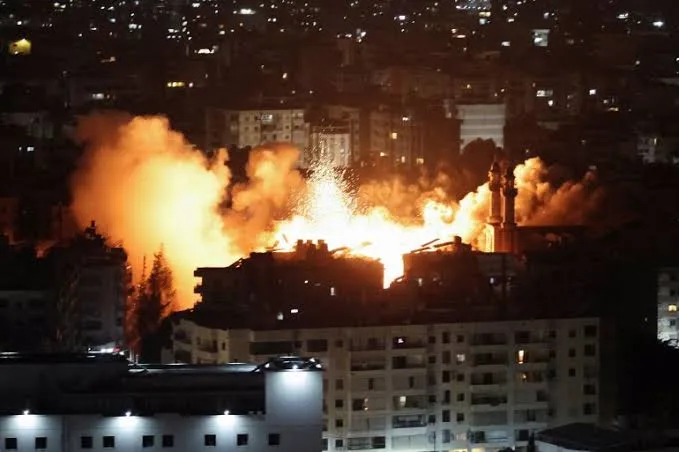4 people at least Killed in Southern – eastern Lebanon as Israeli Strikes Shatter US-Brokered Ceasefire
Israeli air strikes across Southern and Eastern Lebanon on Thursday killed at least four people and wounded several others, according to Lebanese authorities, marking a significant breach of the US-brokered ceasefire agreement that has been in place since November 2024.
The escalation, which saw Israeli warplanes strike deep into the eastern Bekaa Valley, immediately heightened fears that the simmering cross-border hostilities could spiral back into a full-scale conflict.
The Israeli military confirmed the attacks, claiming they were targeting Hezbollah military assets used for reconstruction and operational activities. However, Lebanese officials condemned the raids as a violation of the ceasefire and a deliberate attack on civilian areas.

Headline Points
• Four Fatalities Reported: Lebanese authorities confirmed at least four people were killed across Southern and Eastern Lebanon, including two in the Bekaa region and two others, one an elderly woman, in Arab Salim, Southern Lebanon.
• Targeting Hezbollah Infrastructure: Israel’s military stated its jets targeted multiple sites, including a Hezbollah training camp, a precision missile production site, and military infrastructure used for the group’s reconstruction efforts, particularly in the rugged Jurd Baalbek-Hermel area.
• Ceasefire Violation: The November 2024 ceasefire agreement—intended to halt “offensive” military actions—has been repeatedly challenged by near-daily Israeli strikes, which the IDF justifies as “self-defense” against Hezbollah’s attempts to rebuild its infrastructure.
• Deepening Strikes: The attacks on the Bekaa Valley, far from the border in Eastern Lebanon, indicate an expansion of Israeli operations, raising the risk of escalation and complicating efforts by the Lebanese Armed Forces (LAF) to assert control.
• Civilian Impact: The raids caused panic at schools in towns like Shmistar, where shattered glass injured students and teachers, with Lebanese President Joseph Aoun insisting the strikes targeted “civilian facilities.”
Lessfire’ Over Ceasefire
The renewed intensity of the strikes has led analysts to dub the agreement a “lessfire” rather than a true ceasefire.
Since the truce came into effect last year, UN experts and Lebanese forces have recorded almost daily violations by Israel, which has confirmed over 500 airstrikes on what it alleges are Hezbollah targets.
The recent Israeli focus has been on destroying Hezbollah’s efforts to reconstruct military infrastructure, specifically targeting hundreds of engineering vehicles, construction equipment, and quarries linked to the Hezbollah-affiliated ‘Green Without Borders’ organisation, which the IDF claims are used for military purposes.
The continuation of these strikes, even after a truce, is viewed by some regional experts as a potential blueprint for managing future conflicts, suggesting a future where Israel retains the unilateral right to strike perceived threats without a full resumption of war.
The Lebanese government, while condemning the strikes, continues to face domestic and international pressure to address Hezbollah’s armed presence as part of any lasting solution.
